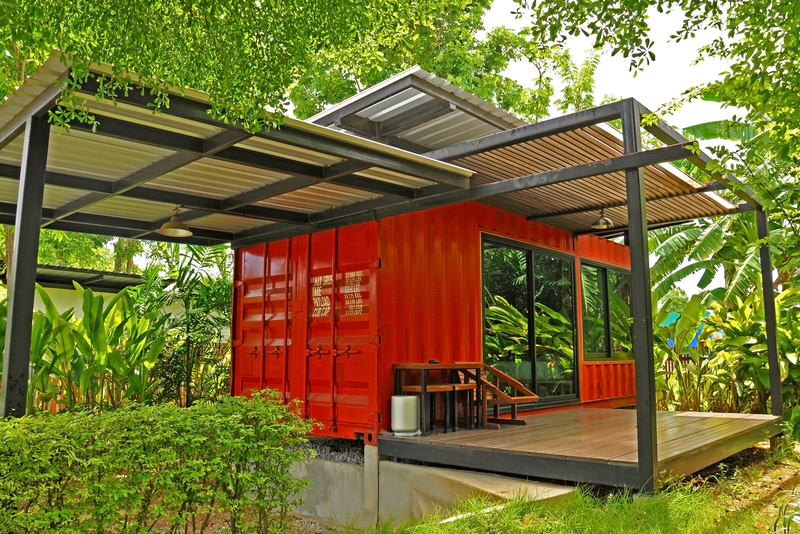Maximizing Wood Waste Utility
Posted on 27/03/2025
As environmental concerns continue to mount and industries seek more sustainable practices, the issue of wood waste has come to the forefront of discussions. Wood waste, which can be generated through forestry activities, industrial processes, or everyday use, represents a significant resource that is often underutilized. This article delves into the importance of maximizing wood waste utility, explores various methods of transforming wood waste into useful products, and highlights innovations in the field.
Understanding Wood Waste
Wood waste is a broad term that includes any by-products or scraps generated during the processing, use, or disposal of wood materials. This can range from sawdust and offcuts in sawmills, to branches and stumps left behind in forests, to old furniture and construction debris. While the term wood waste suggests an inevitability of uselessness, the reality is quite the opposite. When appropriately managed, wood waste can serve various productive purposes.

The Environmental Impact of Wood Waste
Improper disposal of wood waste can have significant environmental repercussions. When left to decompose in landfills, wood waste releases methane, a potent greenhouse gas. Additionally, wood waste can take up substantial space in landfills, leading to quicker depletion of these facilities. On the other hand, recycling or reusing wood waste can alleviate pressure on natural forests by reducing the demand for virgin timber.
Techniques for Repurposing Wood Waste
Several techniques can be employed to repurpose wood waste into useful products, some of which have been practiced for centuries, while others are relatively new advancements. These techniques range from simple, manual methods to complex industrial processes.
Composting
Composting is one of the most straightforward ways to utilize wood waste, particularly for finer materials like sawdust and wood chips. When mixed with other organic matter, wood waste can improve soil structure, enhance water retention, and provide essential nutrients for plant growth. Composting not only diverts waste from landfills but also produces a valuable product for agricultural and horticultural uses.
Mulching
Wood chips and other larger wood waste can be processed into mulch. Mulch is widely used in landscaping and gardening to suppress weeds, retain soil moisture, and maintain temperature. By converting wood waste into mulch, communities can reduce their reliance on commercial mulches, which may be sourced from non-sustainable practices.
Pulp and Paper Production
Wood waste, especially from sawmills and construction sites, can be repurposed into pulp for paper production. This process involves breaking down the fibrous structure of wood into a slurry that can then be processed into paper. Using wood waste for pulp production not only reduces waste but also makes the paper industry more sustainable.
Bioenergy
One of the most promising avenues for wood waste utilization is the production of bioenergy. Wood waste can be used to produce biofuels, such as ethanol and biodiesel, or burned directly to generate heat and electricity. Advances in technology have made it possible to convert even lower-grade wood waste into high-efficiency bioenergy products. This not only reduces reliance on fossil fuels but also provides a use for wood waste that might otherwise be discarded.
Advanced Technologies in Wood Waste Management
In recent years, several innovative technologies have been developed to better manage and utilize wood waste. These advancements are helping industries become more efficient and environmentally friendly.
Pyrolysis
Pyrolysis is a thermochemical process that involves heating wood waste in the absence of oxygen, resulting in the breakdown of organic material into biochar, bio-oil, and syngas. The biochar produced can be used as a soil amendment, while bio-oil and syngas serve as renewable energy sources. This technology not only maximizes the utility of wood waste but also sequesters carbon, contributing to efforts to mitigate climate change.
Lignocellulosic Ethanol
Lignocellulosic ethanol is a type of biofuel produced from lignocellulose, a complex carbohydrate found in wood. Unlike traditional ethanol production, which relies on food crops like corn, lignocellulosic ethanol uses non-food biomass, making it more sustainable and reducing competition with food resources. Advances in enzymatic and microbial processes have made it more feasible to convert wood waste into this valuable biofuel.
Circular Economy and Wood Waste
The concept of a circular economy focuses on designing out waste and pollution, keeping products and materials in use, and regenerating natural systems. Applying circular economy principles to wood waste management can significantly enhance resource efficiency and sustainability.
By integrating wood waste into a circular economy model, industries can create closed-loop systems where waste from one process becomes input for another. For example, sawmill offcuts can be used to produce engineered wood products, or old pallets can be refurbished and reused instead of being discarded.
Challenges and Opportunities in Wood Waste Management
While there are numerous opportunities to maximize wood waste utility, several challenges need to be addressed. These include logistical issues related to the collection and transportation of wood waste, the need for investment in advanced processing technologies, and market acceptance of products made from recycled or repurposed wood.
However, these challenges also present opportunities for innovation and collaboration. Through public-private partnerships, investment in research and development, and community engagement, the potential for wood waste to contribute to a more sustainable future can be fully realized.
Moreover, policy and regulatory frameworks can play a crucial role in encouraging the use of wood waste. Governments can implement incentives for industries that practice sustainable wood waste management, or establish standards and certifications to ensure the quality and environmental benefits of wood waste products.

Case Studies: Successful Wood Waste Management Initiatives
Several successful initiatives around the world demonstrate the potential of wood waste management.
Sweden's Bioenergy Revolution
Sweden has been a global leader in bioenergy production, with wood waste playing a crucial role. The country has invested heavily in district heating systems that use wood waste as a primary fuel source. This has not only reduced dependence on fossil fuels but also created numerous jobs in rural areas.
Australia's Timbercrete Innovation
In Australia, a company called Timbercrete has developed an innovative building material that incorporates sawdust and other wood waste into concrete. This product is lighter and more environmentally friendly than traditional concrete, demonstrating a creative application of wood waste in construction.
Conclusion
Maximizing wood waste utility is a critical component of sustainable resource management. By understanding the different types of wood waste and employing various techniques for repurposing it, industries and communities can significantly reduce environmental impact. Advanced technologies and the principles of the circular economy further enhance the potential for wood waste to be transformed into valuable products. While challenges exist, the opportunities for innovation and collaboration make wood waste a promising resource for a sustainable future.


 office@benandjerry.org.uk
office@benandjerry.org.uk https://benandjerry.org.uk/
https://benandjerry.org.uk/

